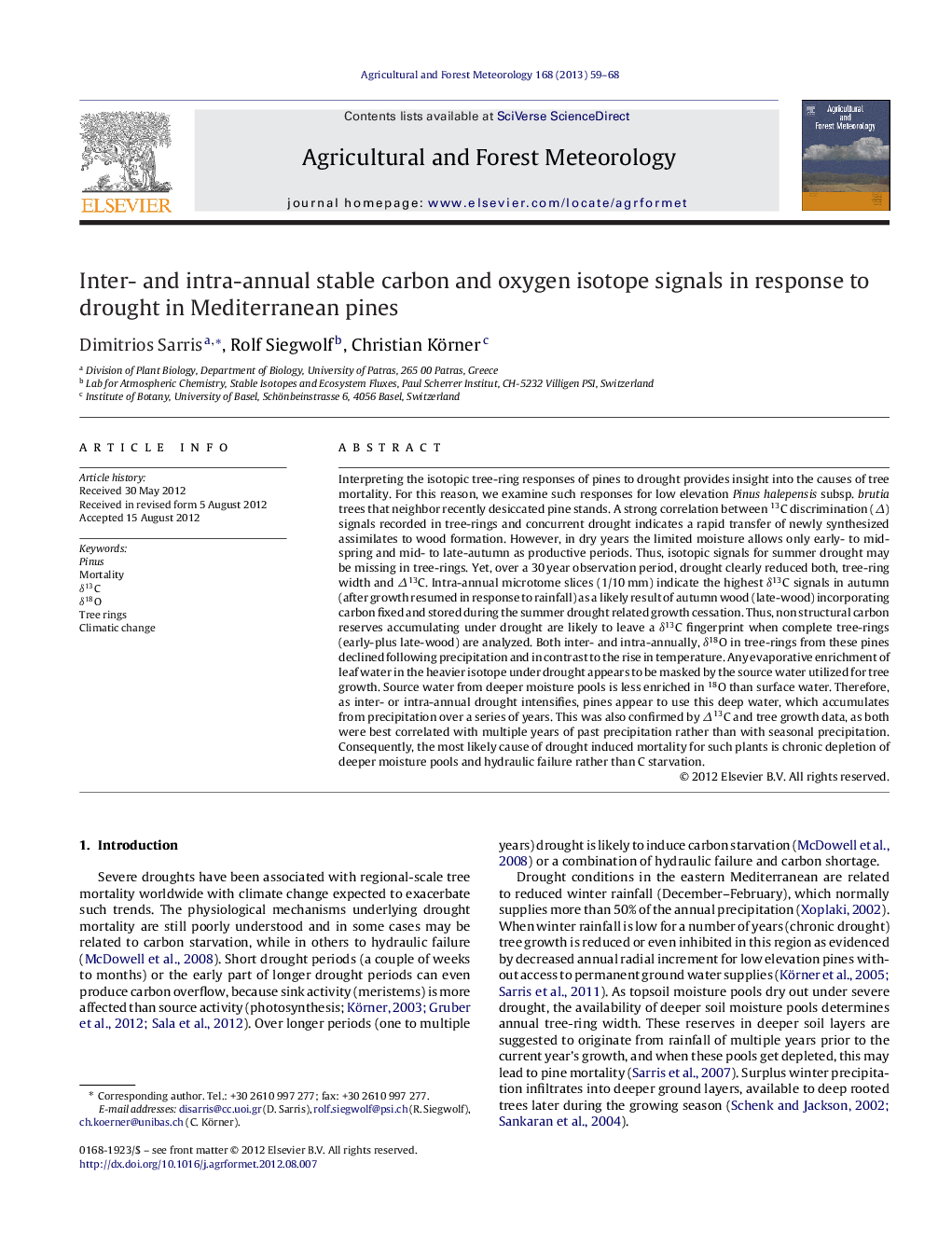| Article ID | Journal | Published Year | Pages | File Type |
|---|---|---|---|---|
| 81929 | Agricultural and Forest Meteorology | 2013 | 10 Pages |
Interpreting the isotopic tree-ring responses of pines to drought provides insight into the causes of tree mortality. For this reason, we examine such responses for low elevation Pinus halepensis subsp. brutia trees that neighbor recently desiccated pine stands. A strong correlation between 13C discrimination (Δ) signals recorded in tree-rings and concurrent drought indicates a rapid transfer of newly synthesized assimilates to wood formation. However, in dry years the limited moisture allows only early- to mid-spring and mid- to late-autumn as productive periods. Thus, isotopic signals for summer drought may be missing in tree-rings. Yet, over a 30 year observation period, drought clearly reduced both, tree-ring width and Δ13C. Intra-annual microtome slices (1/10 mm) indicate the highest δ13C signals in autumn (after growth resumed in response to rainfall) as a likely result of autumn wood (late-wood) incorporating carbon fixed and stored during the summer drought related growth cessation. Thus, non structural carbon reserves accumulating under drought are likely to leave a δ13C fingerprint when complete tree-rings (early-plus late-wood) are analyzed. Both inter- and intra-annually, δ18O in tree-rings from these pines declined following precipitation and in contrast to the rise in temperature. Any evaporative enrichment of leaf water in the heavier isotope under drought appears to be masked by the source water utilized for tree growth. Source water from deeper moisture pools is less enriched in 18O than surface water. Therefore, as inter- or intra-annual drought intensifies, pines appear to use this deep water, which accumulates from precipitation over a series of years. This was also confirmed by Δ13C and tree growth data, as both were best correlated with multiple years of past precipitation rather than with seasonal precipitation. Consequently, the most likely cause of drought induced mortality for such plants is chronic depletion of deeper moisture pools and hydraulic failure rather than C starvation.
► The causes for drought induced mortality are investigated for Brutia pine. ► C starvation is unlikely as non structural carbon reserves accumulate under drought. ► Tree-ring Δ13C and width correlated best with multiple years of past precipitation. ► Tree-ring δ18O declined in contrast to the rise in temperature. ► Chronic depletion of deeper moisture and hydraulic failure is the likely death cause.
